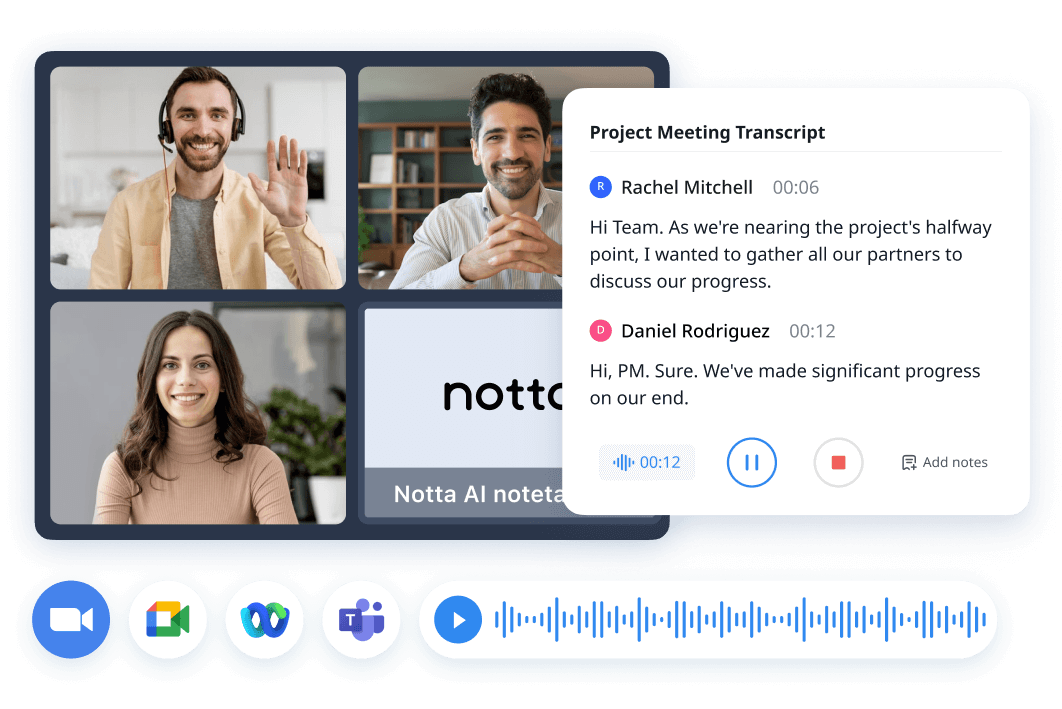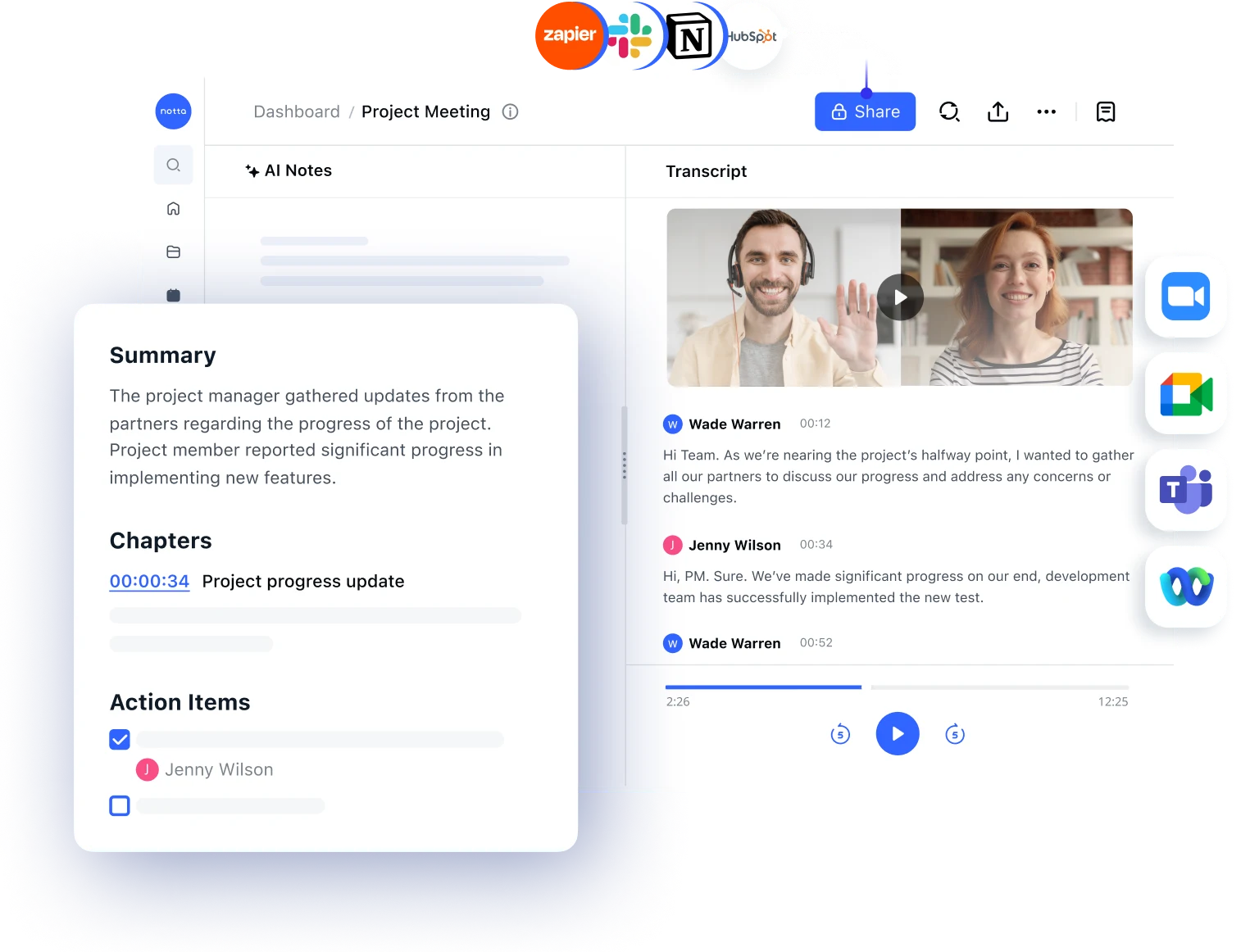Remote or not, the key to making a meeting productive and valuable is how well the meeting starts. I have hosted 1000+ meetings, including 1:1 calls with clients, team meetings, project updates, or just random calls. Before I schedule or start the meeting, there are two questions I ask myself: Why am I here? Why should I care?
If you are wondering how to start a meeting in the right way that actually engages the attendees and helps them understand what the meeting is about, this guide is for you. Here, I'll help you understand how to start a meeting using the IEEI framework, meeting introduction examples, and some tried-and-tested tips for everyone.
Why is the start of a meeting so important?
Meetings can take up a lot of time, and it is important to help attendees know the meeting is going to be a valuable session. In fact, properly starting the meeting is a sign that the efforts of the attendees are valued and the session will run smoothly. On the other hand, if the meeting starts poorly, it's a sign that the meeting won't be valuable.
Dos and don'ts of meeting introductions
Sometimes, the smallest change in the meeting introduction can make a big difference in how the sessions are conducted. Here are a few do's and don'ts to keep in mind:
Do create a meeting agenda: I always use a simple formula: If I'm scheduling a meeting, there should be an agenda. Otherwise, the meeting should be canceled. That's because creating an agenda means you're stopping and thoughtfully considering the purpose of the meeting and its attendees.
Do add fun to the introduction: Meetings are generally unpleasant, and nobody loves attending them. We usually banter for a couple of minutes so everyone feels comfortable, and then we hand it off to whoever is hosting the meeting. You can also keep the meeting introduction casual and informal.
Don't overpromise: Instead of overpromising or giving unrealistic deadlines to the attendees, make sure to keep everything transparent and honest.
Don't keep it long: Keep the meeting introduction short and sweet to respect the time of the attendees and make sure they're focusing on more important things.

Start every meeting efficiently with Notta
Let our AI do the heavy lifting - record, transcribe, and summarize meetings - so that you can focus on the conversations.
How to start a meeting using the IEEI framework
If meetings are not started well, they can be ineffective and invaluable for everyone who is attending. That's where the IEEI framework helps. It stands for Inform, Excite, Empower, and Involve, which aims to set a positive tone for the meeting. Let's briefly explain how to open the meeting using the IEEI framework:
Inform
Your meeting should start by informing everyone what they can expect. Here, the aim is to inform everyone why they're there and what they'll have when they're done.
You can say something like this: ‘The purpose of today's meeting is….Once we are done, you all will have a complete understanding of…’ This way, everyone attending the meeting will be on the same page.
Excite
In this part, you'll need to focus on: ‘Why should people really care about the meeting? Or, ‘What is in store for them?’ One simple formula to do so is by using the words ‘you’ and ‘your’ in the excite portion.
Let me give you an example of how it looks: ‘Thank you for joining in, Team! Today, our main goal is to introduce some time management strategies so you can perform better and achieve work-life balance.’
Empower
If you really want to turn a boring meeting into a productive session, you'll need to make sure the attendees know the power they hold in the meeting.
For example, if the meeting is focused on generating and executing ideas, you can use a simple and empowering statement like: ‘The team leader has selected the best employees to work on this new project. I would love to hear your thoughts on time management strategies and meet our goals.’
Involve
If there's one simple formula that always works in a meeting, it's ‘involving everyone in the conversation.’ You need to make sure everyone can make their points, and their voice is heard.
I always prefer saying, ‘It's been a while since we all have discussed [insert the key topic here]. What do you guys think we should follow to overcome the [challenges] and make better use of our time?’
Meeting introduction examples
There's no doubt that time is valuable, and starting the meeting in the right way means you're respecting everyone's time and efforts.
Here's a meeting introduction example that you can follow:
‘Hey everyone, I'm [insert your name] — your meeting host. Thank you for joining the meeting. Let's start with a fun activity called ‘Never Have I Ever’ or ‘Five Strikes.’ I’ll go first.
[Let the team share their answers]
Today, we’re going to discuss a new marketing strategy for our hero [product]. As I've mentioned in the meeting agenda, you can expect the meeting to last about an hour.
Before we conclude the meeting, we will finalize at least 5 marketing strategies for the upcoming month. Plus, I'll be assigning tasks to all of you so we all can work together to make this project a success.
You all are here because the marketing team leaders have collectively discussed and decided to bring the best minds together. I hope everyone in this room (or this call) will share a few ideas that would bring in more customers.’
Tips to start the meetings
When started well, meetings can be productive and valuable to everyone present. If you're the host and want to make sure the meetings go more smoothly, here are a few tips to check out.
1. Set clear objectives and expectations
Whenever you decide to schedule a new meeting, focus on three W's — Who, What, and Why. Here are the questions you'll need to ask yourself:
Who will attend the meeting?
What is the main goal or objective that you want to achieve in the meeting?
Why is the meeting happening?
Once you have the meeting goals and objectives handy, they help you create a clear roadmap from start to finish.
2. Prepare agenda before the meeting
Regardless of the meeting type you're scheduling, you'll need a solid plan and agenda that sets clear expectations for the team. Your meeting agenda should define the start and end times and key topics for discussion. This helps attendees prepare for the meeting beforehand and come equipped with all the necessary information.
3. Start on time
Always start your meetings on time and make sure to wrap up all the topics before the end. If you might be late to the meeting, make sure to send someone a message who will be present so they can inform the team.
If you're running the meeting and you know you'll be late, it's better to use phrases like ‘The topic needs a detailed discussion. So, we will plan another meeting this week to discuss the topic in detail.’
4. Keep the meeting focused
Remote meetings can go off track very easily, so make sure to keep attendees focused. Shorter meetings keep people focused, so make sure you limit meeting time to 30 - 40 minutes.
5. Follow up on action items
Meetings also involve drafting summaries and assigning action items to the right people. If that seems like a hassle, you can consider automating the process using Notta. The tools work in the background of your meetings to automatically record, transcribe, and summarize the conversations — so you don't have to.

Key takeaways
I don't love work meetings (nobody does!), but the reality is they're important for getting work done. If you often host meetings, you'll need to understand how to start a meeting in the right way. I've outlined the IEEI framework and some tips to keep the meeting introductions short, sweet, and valuable.
We all have experienced the post-meeting panic where you can't find the notes or the assigned tasks. Sure, you can always rewatch the recordings, but that means you're wasting your time. Notta AI meeting assistant makes it easy to record and transcribe online conversations so you can turn insights into action faster for a productive meeting.
FAQs
What will you say to formally start and end a meeting?
Here's what you can say to formally start the meeting: ‘Hey Team! It's great to have you all here. I'd like to welcome everyone.’ Once the discussions are over, you can end the meeting by saying: ‘Thank you all for your time. It looks like we have covered the topic in detail. I'll soon be sharing the meeting summary link and action items with you.’
If you want some great tips, ideas, and phrases to end a meeting effectively and professionally, check out our article.
How do you greet people at the beginning of a meeting?
You can start the meeting with the classic ‘Good morning/afternoon’ and then thank all the attendees for joining. Here's an example: Good morning, everyone! Thank you for taking time out of your busy schedule and joining us for a discussion. Or, ‘Good morning, everyone! I would like to thank you all for joining the meeting at such short notice.’
What are the short opening words to start a meeting?
Some short opening words you can use to start a meeting include:
Good morning/evening, Team
Welcome everyone
Thank you all for coming
It seems everyone is here, so let's get started
I think we are all set to start the meeting.


